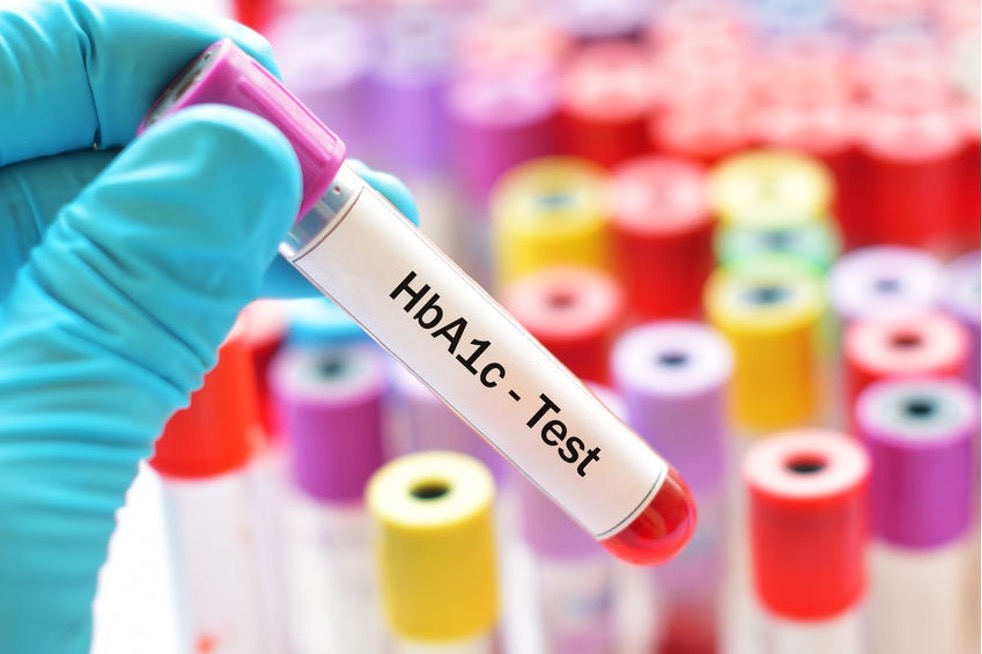An A1c test, also known as an HbA1c test or Glycated Hemoglobin test, is a blood test that is used as a diagnostic tool to determine whether an individual has diabetes or not. At the same time, it is also a monitor to test the effectiveness of a treatment plan for diabetics.
It measures the average blood sugar level over the last 3 months.
A1c is a type of glycated hemoglobin that is bound to glucose, and it’s a major protein of our red blood cells which carries oxygen through our body.
The A1c is formed by a chemical reaction between hemoglobin and blood glucose. And when an a1c test is high, it means there is a high percentage of hemoglobin attached to glucose. Meaning, there is a high level of glucose in the blood stream. And if the opposite is true, there is a low level of glucose in the blood.
Once a hemoglobin is glycated (attached to glucose), it remains that way for as long as that red blood cell exists in our circulation. And that is usually 3-4 months, which is the average lifespan of a red blood cell.
The A1c home test reports the amount of hemoglobin bound to glucose in percentage, and displays the status of blood glucose for the past 3 months.
A normal a1c level shows a value of < 5.7 %, and a percentage > 6.5 % shows a diagnosis of diabetes.
A1c percentages between these two levels (> 5.7 % to < 6.5 %) is diagnosed as pre-diabetes.
The Importance of an A1C Test
An A1c test is an important tool to see the development of an individual’s glucose levels 3 months back. It is like a monitor, that is used both in the diagnosis of Type 2 Diabetes, and also to make treatment plans for patients.
Patients with very high A1c levels are put on medication like metformin or other drugs to immediately lower their blood sugar level. And if the A1c level is not so high, doctors usually give their patients a choice between taking drugs or managing it with diet.
Patients following a treatment plan usually have an A1c test made every 3 months by their doctor, or they do it themselves, using a home testing kit like the A1cNow self check to see how well glucose is being managed. It is a way to follow up on the treatment plan, to see if more or less treatment is needed. The goal here is of course to reach a normal, or close to normal A1c level.
5 Tips to Lower A1C
- Reduce refined carbohydrates and junk food.
- Eat healthily + nutritional supplementation: To keep your A1c levels in an acceptable range, it is important to eat healthy and take nutritional supplements like our natural Lysulin supplement, which is an excellent supplement to move blood sugar into the cells.
- Test blood sugar frequently to identify patterns that cause a spike in blood sugar to eliminate them. It’s also a good idea to self test your a1c levels more frequently with our A1cNow self check kit.
- Reduce stress. Stress is a major contributor to diabetes as it gets our hormones out of balance. This has an effect on our metabolism, and leads to high blood sugar levels.
- Exercise on a daily basis is great and very important for lowering the a1c levels and keep ones blood sugar in the acceptable range. Exercise gets the heart rate up, and is good for the cardiovascular system. The blood gets flowing, and old glycogen in the muscles are burnt away so that new blood sugar can enter the cells.

